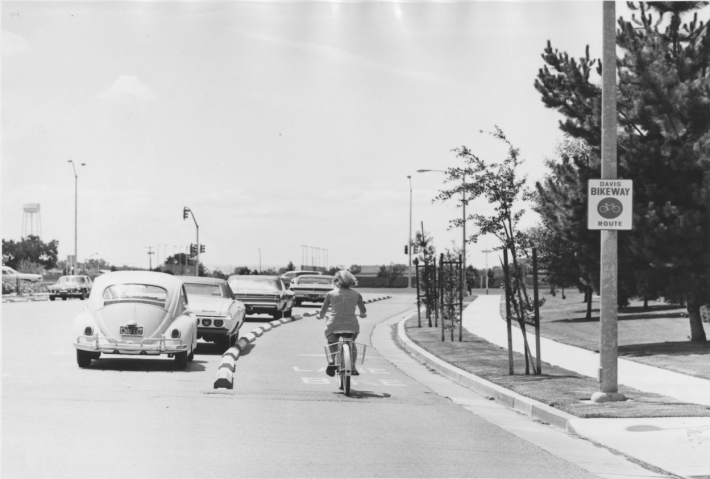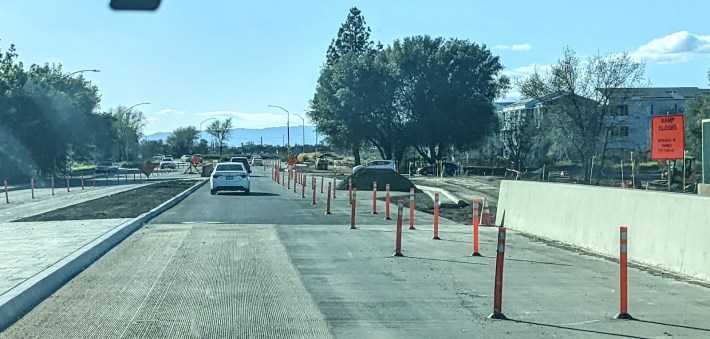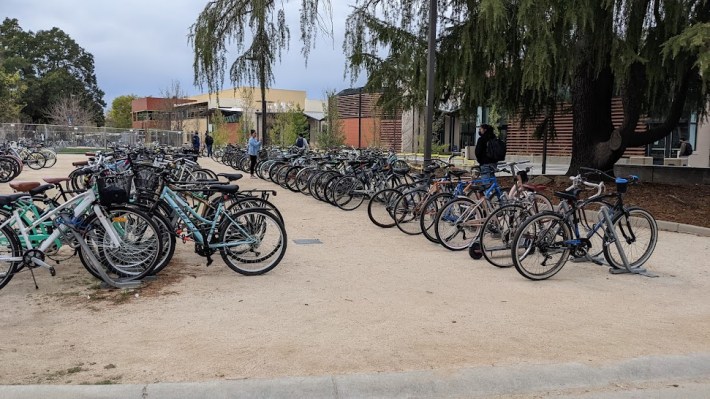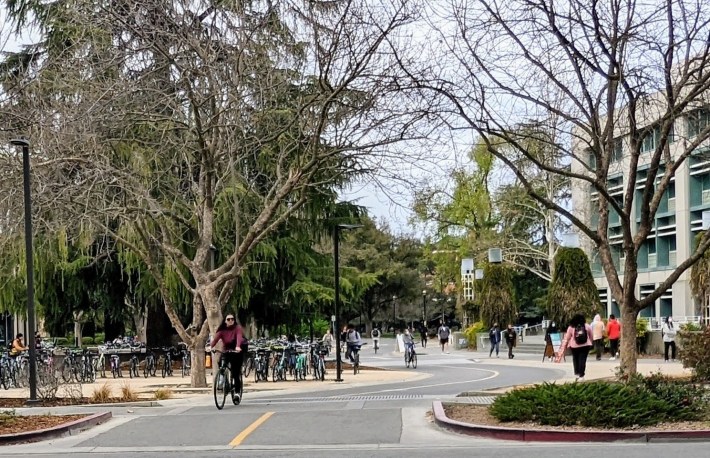Para leer este artículo en español, haga clic aquí.
Did you know the first bike lane in the United States was installed in Davis, California? I didn’t know, but when I visited Davis recently, I was amazed to learn about how Davis fought to establish bike lanes on roads.

Earlier this month I had the chance to go to the University of California Davis to attend the inaugural kickoff for the Environmental Justice Fellowship I am a part of. The Fellowship is an innovative program that invites UC Davis academic researchers and professors to collaborate with 11 environmental justice activists and leaders across the United States to enhance the work of equity in environmental justice across various sectors. I am focusing on power structures, specifically in transportation planning and research.
Admittedly, when I first arrived in Davis, I was unaware of its cycling past and how the city shaped cycling in the US. I also wasn’t aware that the nickname of the city was “Bike City USA.” I have read several articles about top cycling cities in the U.S., but I never read about Davis. So when I arrived and saw very clearly marked, well-paved, and wide bike lanes on major and residential streets, I was excited to bike through the city and campus. What I found was beyond what I thought a biking city in the U.S. could look like; I discovered an incredible bike network that reached every edge of the city.

The story of the first bike lane is said to have started when a UC Davis economics professor, Frank Child, and his wife, Eve, had learned about bike lanes during their time in the Netherlands and began proposing separate bike lanes in Davis. From there a group of citizens began petitioning for bike lanes to be installed on certain streets. The legality of bicycles on streets and feasibility of bike lanes was disputed for two years, and pro-bike candidates ran for city council. Then the City Council approved building bike lanes. Not only did they design the width, but they also established signs, stencils, where to place bike lanes (adjacent to the curb), and more. By 1967, the ordinance to create bike lanes was introduced. As always the effects on parking and businesses were discussed.

The city is said to have more bikes than people, and I believe it. It comprises an extensive 50 mile network of bike lanes that could get you from one side of the city to the other. This means that there are bike lanes on 95-percent of the major streets. Additionally, there are 60 miles of off-street bike and pedestrian pathways. These trails go through natural areas, like creeks, and easily get you through the UC Davis campus. The transition from trail to street is the best I have ever encountered in my travels across the US.

As you cycle through the UC campus, almost every single building has extensive bike parking. It seems like every person that goes to school there has a bike. I had never biked among so many people in my life. There are several bicycle-only roundabouts, or bike circles on campus, which were pioneered there for safety and efficiency. I had never ridden through one and it definitely caught me by surprise.

However, it seems like learning to navigate them is a rite of passage for all students. There are also three types of bike circulation routes on campus: bike lanes, bike paths, and bike streets. Bike streets are streets dedicated to bike use only. They look like traditional streets in width and markings and are separated from the sidewalks. Car traffic and pedestrians are not allowed on these. However, bike paths and bike streets tend to function as mixed-use paths with pedestrians using them when pedestrian amenities are limited.

As I biked with hundreds of Davis residents and students on bike paths under luscious tree canopies, I realized that I was so used to biking next to cars in Chicago, that I learned to be aggressive. But in Davis, I felt at ease as I rode slowly. The efficiency of using the street, road, and path on a bike was comforting. Biking in Davis left me with the reinforced thought that people want to bike and if we provide the right infrastructure and safety, people will bike.






